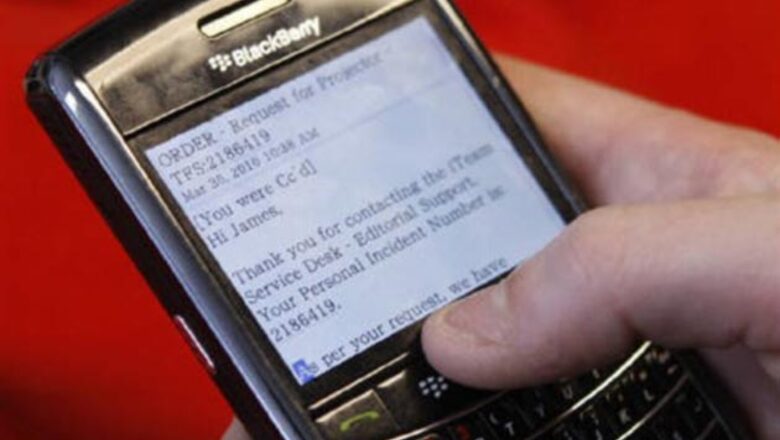
views
New York: Imagine if hundreds of people were talking to you simultaneously about dozens of different topics and each was expecting an immediate response.
You'd go crazy, or at least turn up the volume on your iPod.
Yet that's what it can feel like when you look at your email inbox: a surfeit of questions, comments and come-ons that invite a speedy reply.
We know that it's polite to respond quickly - it's an etiquette instinct we've evolved ever since stone age man procrastinated with the cave-to-cave salesmen hawking iron.
And it's increasingly a reason why we're checking our BlackBerrys so often.
More than one quarter of Americans and a fifth of Britons who check email outside of business hours do so because they feel they are expected to provide quick responses, even outside "regular" business hours, according to a survey published this month by Xobni, a maker of software for searching your Outlook email.
(The quote marks are there for people who think the workplace abandoned regular hours at around the same time that Motorola thought it would be a great idea to let people carry phones in their pockets.)
But quick-fire responses are frequently impractical, especially if you work for one of those companies that expects you to do actual work. So here are some strategies for dealing with an overflowing inbox without losing your cool.
BECOME A FILTER NINJA
Outlook and other email software lets you set up filters that show you only the messages that meet your selected criteria.
I have one filter called "Top Contacts" that shows me only messages from my boss, my direct reports and other email addresses that I've told Outlook to look out for. These usually warrant the quickest response.
Another called "Only to Me" shows me emails where my address is the only one on the "to" line. These emails are likely to deserve a faster reply too, if only because nobody else is going to answer them for me.
You can likewise set up filters for criteria such as "Family," "Bank," "People who are suing me" or whatever else helps you find the messages that matter most.
EDUCE YOUR CARBON COPY FOOTPRINT
Many of us use the cc line too liberally, copying everyone in our organization who has recently expressed an opinion on the subject we're writing about.
While there are legitimate reasons for using the cc line to keep people in the loop, abuse of the electronic "carbon copy" is a big factor behind inbox bloat.
You can dissuade persistent offenders by politely explaining to them what you need to know ("Looking forward to hearing more about the new line of iron-based tools, John. In the meantime, I'm sure Paul can keep me in the loop about any minor changes to our decision to phase out stone"). But good etiquette is always best taught through example. Cut down on the cc'ing and trust that others will follow your lead.
GRAB A TECHNICAL ASSIST
Filters are okay, but my email software really ought to be able to do the hard work for me. After all, it has all the information it needs to figure out who are my most important contacts based on the frequency with which we exchange email.
That's the theory behind Gmail Priority Inbox, a feature Google introduced on Aug. 30. This optional way of organizing your Gmail puts your important messages at the top of your inbox.
Gmail requires a bit of training to help it understand what you consider important, but early reviews are largely favorable. I'm not aware of any equivalent tools for Outlook, though Xobni told me that they're working on ways to help people prioritize their inbox.
















Comments
0 comment